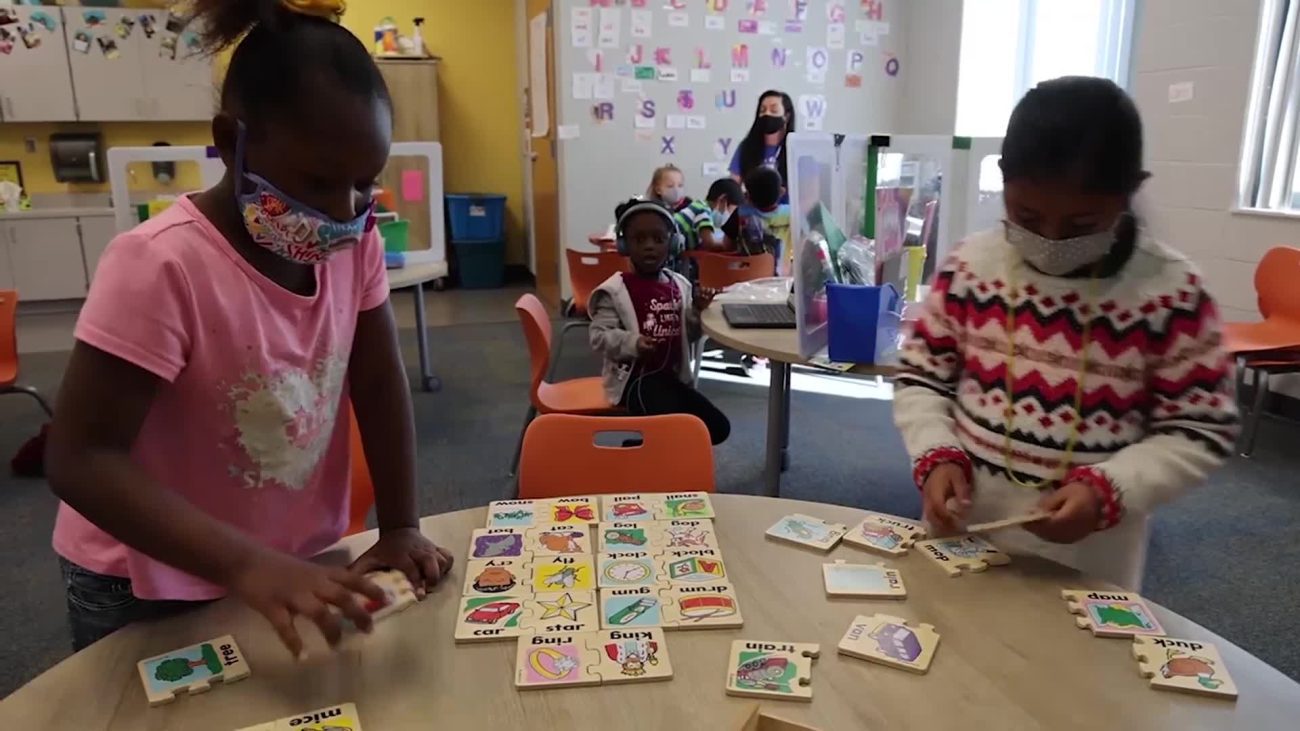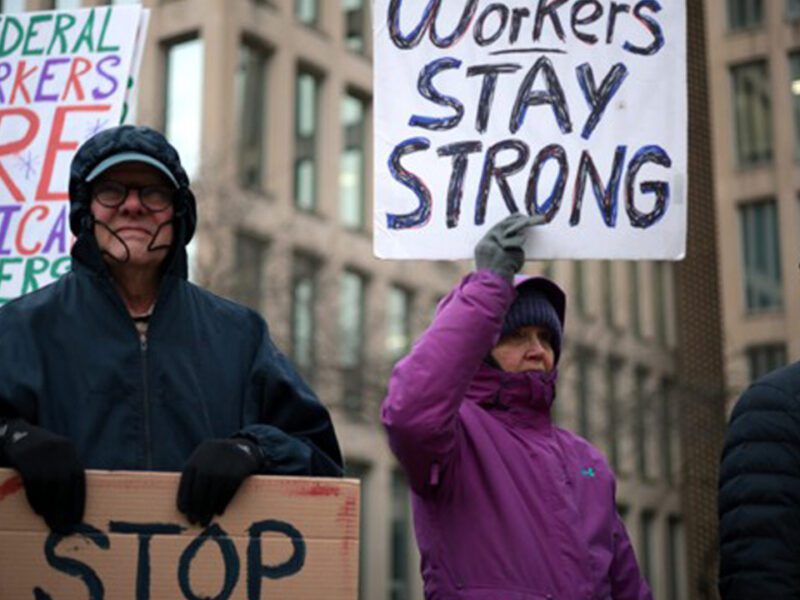Evidence grows Florida schools aren’t spreading COVID-19, but teachers ‘feel completely exposed,’ want vaccines
Orlando Sentinel | by Leslie Postal | February 22, 2021
Was Gov. Ron DeSantis right when he opened schools 8 months ago?
Gov. Ron DeSantis demanded in early July that Florida’s public schools open for parents who wanted that option for their children, a decision that sparked fierce public debate, lawsuits and teacher protests with cars displaying signs that read, “How many students must die?” and “Teachers Lives Matter.”
Nearly eight months later, he insists he made the right call, citing additional studies that show schools can operate safely during the coronavirus pandemic.
“We have done it the right way. We are not going to turn back,” DeSantis said at a Tallahassee press conference Monday. “There is no evidence to suggest that school kids should do anything else other than be in school. This has been clear for months and months and months.”
Most of Florida’s public schools opened in August, the only exception the three big South Florida school districts in counties where the virus was most prevalent. By October, all the state’s public schools were open, and now more than 65% of its students are on campus, with the rest studying online.
Across the country, however, schools from Las Vegas to St. Louis to Boston remain mostly shuttered, amid fears that opening campuses will put students and staff at risk.
Last week the Centers for Disease Control and Prevention released new school guidance, recommending schools open but only if the number of coronavirus cases was below a certain threshold. That threshold was so low, however, that if that guidance was followed, most schools in Florida, and the nation, couldn’t open.
DeSantis called the CDC guidance a “disgrace.” Richard Corcoran, his education commissioner, told Florida schools to ignore it.
“Schools should stay the course they began in summer 2020,” Corcoran said in a statement issued the day before the CDC release. “The science has been clear since August, and subsequent studies and data since then show that schools are safe to reopen.”
But plenty of Florida teachers, and their unions, remain nervous about in-person education and skeptical of whether the state and school districts have been upfront about COVID-19 cases.
They also wish DeSantis, after insisting schools open, now would make teachers a vaccine priority, especially as more students returned to campuses in January, making social distancing more difficult. The governor has made health-care workers and residents 65 and older the top priority for the shots so far.
“I feel completely exposed,” one Orange County teacher wrote in a recent survey done by the local teachers union. “I have two classes that are full, and there is not enough social distance.”
There have been almost 61,000 COVID-19 cases tied to Florida’s public schools, and 37 educators who’ve died from the disease, although it is not clear where they contracted the virus, according to the statewide teachers union.
There is “a lot of distrust and mistrust” surrounding school opening decisions, and that is not surprising, said Dr. Jay Wolfson, a professor of public health, medicine and pharmacy at the University of South Florida’s medical school. “These are political decisions made by political individuals,” he said.
Following Trump’s lead
Florida’s school reopening order, for example, was signed by Corcoran — like DeSantis, a Republican — on the same day in July that then-President Donald Trump tweeted, “SCHOOLS MUST OPEN IN THE FALL!!!”
On Monday, DeSantis blamed teachers unions and their Democratic supporters for keeping schools closed and putting “special interests ahead of the well-being of our children.”
Despite the rhetoric, Wolfson said there also is now convincing data about schools and COVID.
“It appears pretty clear that school settings, especially for K-8, are very safe,” Wolfson said.
High schools have been slightly trickier because teenagers typically spend more of their free time outside of school without adult supervision and older teenagers are more susceptible to the virus than younger kids.
But Wolfson and other medical experts — echoing comments made by Central Florida doctors — say schools have not been a source of virus spread when the often-touted health rules about wearing face masks, washing hands and physically distancing are followed.
A study done in North Carolina and released in January was among the latest to reach that conclusion. There was “extremely limited” transmission of the coronavirus on campuses, the study found, and opening schools “did not cause a larger community infection burden.”
Earlier studies from Europe and the United States also showed that schools could open. But some also offered warnings, including one study that noted significant problems from a wrestling tournament at a Polk County high school in December. The tournament brought together teams from 10 high schools and led to 79 COVID cases, with wrestlers, coaches, referees, students, teachers and family members infected.
Months into school teachers are still nervous, union leaders said, especially as on-campus enrollment has increased since January and more teachers who were working at home have been told to teach from their classrooms.
School safety success
The study from North Carolina showed the success of face masks, distancing and hand-washing in schools, said Dr. Kanecia Obie Zimmerman, an associate professor of pediatrics at Duke University Medical Center, and one of the studies co-authors, in a call with reporters.
“We know schools are really good at enforcing rules, and that really is the difference,” Zimmerman said.
Schools reported cases but their open doors didn’t make things worse. Most came not from campuses but from community events children attend, such as parties and play dates, she added.
DeSantis’ key argument for opening schools has wide support, even among his critics: That many students need in-person classes to succeed academically. Schools across the region say reading and math tests and report card grades all show youngsters have lost ground scholastically when they studied online from home.
For that reason, Debra Pace, superintendent of the Osceola County school district, said opening campuses made sense. “We don’t want to lose a generation of kids to lost learning,” she said.
Face masks and other safety protocols have worked, Pace said, and Florida’s warm weather has helped, too, allowing schools to send students outside, where the risk of virus spread is reduced, for physical education and recess and even band and choral classes.
But keeping everyone safe, Pace conceded, has become “more of a challenge” as more students have returned to campuses. Her administrators, like many across the region, have urged youngsters who are online but struggling to switch to in-person classes.
Public schools are “the best place for children to learn,” agreed Andrew Spar, president of the Florida Education Association, the statewide teachers union, during a meeting with the Orlando Sentinel’s editorial board.
But the union, which sued the state in July over its reopening order, fearing open campuses weren’t safe, said it still worries about protecting teachers’ health and questions whether the state and its school districts have been upfront about all school COVID cases.
“We are fortunate that our schools didn’t prove to be the superspreaders that everyone thought they might be,” Spar said. “But we don’t know the extent of what’s has really happened in our schools because there hasn’t been transparency.”
DeSantis, in touting his “open the door” school policy, said Florida had fewer pediatric COVID-19 cases per capita than many states with closed schools. A report from a Miami television station, NBC-Channel 6, published on Thursday, however, showed that was true only for children 14 and under, meaning the governor had ignored counts for high school students.
Debate ‘doesn’t matter’
Barbara Jenkins, superintendent of Orange County Public Schools, said debate about whether to open schools “doesn’t really matter at this point.”
Florida required its public schools to open and now data suggests that is “an appropriate strategy,” Jenkins said, noting the rate of positive cases on OCPS campuses has been less than half of the rate in Orange County overall.
But opening and operating during the pandemic has been a struggle, she said, as the district tries to balance academic needs with health and safety concerns. That would be easier if teachers could get vaccinated, and Jenkins has written DeSantis asking him to move teachers up the vaccine line. “Let them be a priority,” she said.
Since August, OCPS has closed five schools for two-week stretches, shifting everyone to online learning, because large numbers of students and staff had to quarantine after exposure to someone who tested positive for the virus. As of Friday morning, it had logged 4,571 cases on its 202 campuses since August.
“We didn’t even want a single COVID case in our community, and we’ve had thousands,” Jenkins said. “It’s not a perfect scenario.”
Photo: Orlando Sentinel






